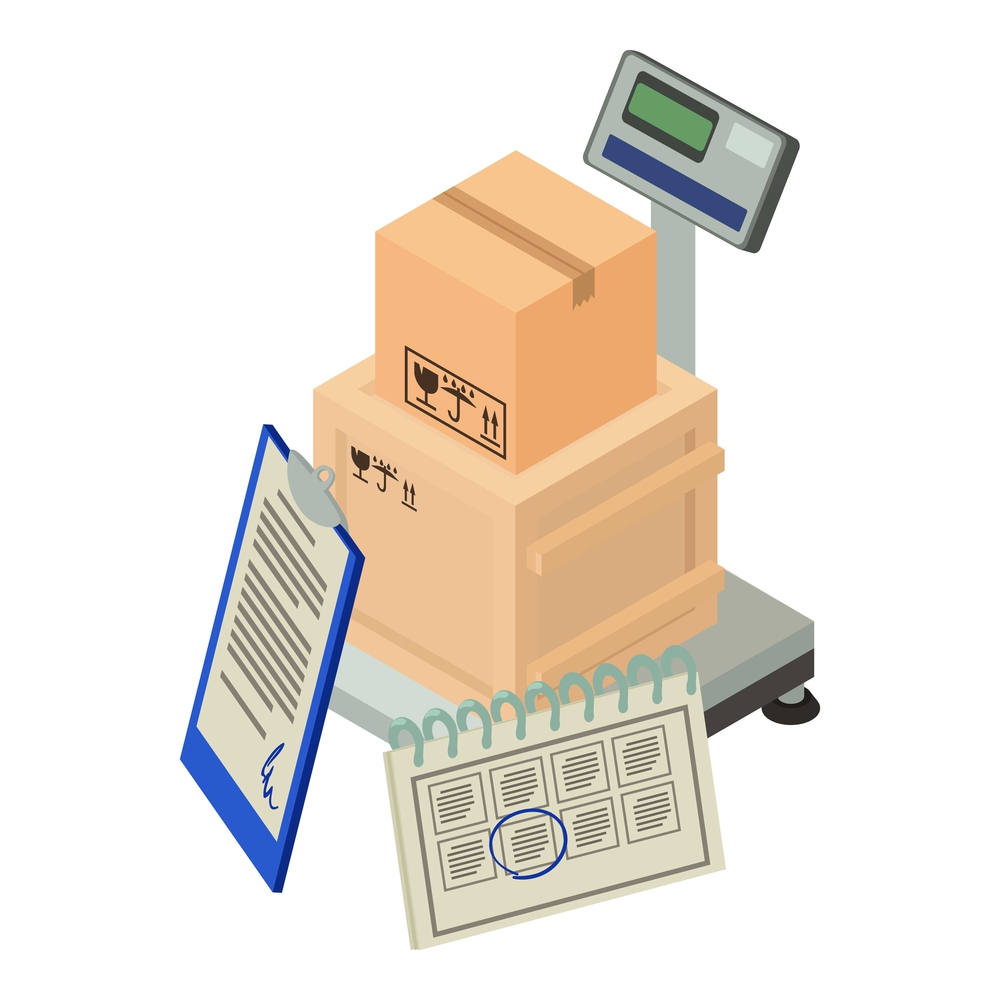Freight classes might sound complicated, but they are a pretty simple way to ensure that shipments fall into the right categories. Whether it be based on weight, size, or how fragile cargo is, freight classes make sure that shipping remains organized and as cost-effective as possible. For businesses sending LTL freight or full truckloads, understanding the right freight class can make a big difference in how smoothly things run.
The National Motor Freight Classification (NMFC) system is what most carriers use to figure out these freight classes. This helps in determining the shipment rate and affects the way goods are handled. By getting the freight class right, you’re not only managing your shipping costs better but also setting clear expectations with your carrier to make it easier for everyone involved.

What is Freight Class and Why Is It Important?
Freight class refers to the system that allows the classification of various types of goods into moving classes based on size, weight, and how easily they can be handled. This form of freight classification developed by the National Motor Freight Traffic Association allows both carriers and shippers to more precisely determine the best way to move freight shipments across the country.
Along with smoother shipping, freight class selection provides the right impact on the cost. Generally, the higher the freight class, the more expensive the rate because the freight could take up more space or require special handling. If one freight shipment was misclassified, you could incur penalties or surprise charges. Choosing the correct freight class in the very beginning avoids these issues and keeps your shipment moving without extra headaches.

National Motor Freight Classification (NMFC) Overview
The NMFC system helps make sense of the shipping world by classifying different types of freight. Created by the Commodity Classification Standards Board (CCSB), the NMFC system ensures consistency in how items are categorized based on things like weight, density, and how they need to be handled. It’s a tool that keeps everyone on the same page—from shippers to carriers—making it easier to manage freight rates and shipping processes.
Each type of cargo has an assigned NMFC number; these are the codes that link them to their category. The Commodity Classification Standards Board (CCSB) regularly updates these codes so that this system does not become obsolete with shipping trends. Logistics companies need to understand these NMFC codes and follow the government and carrier policies by using these numbers. This process keeps shipments on schedule and also ensures the billing is appropriate.

Factors That Determine Freight Class
Freight class is determined by a few key factors: density, storability, handling, and liability. Freight density in pounds per cubic foot is a big piece of the puzzle. The more compact and dense your freight is, the lower the class, which often means lower shipping costs. To calculate freight class, you simply divide the weight by the space it takes up—so understanding your freight’s density, per cubic foot, is essential. Storability comes down to how easily the freight can be stored or stacked. If your shipment is bulky or involves hazardous materials, it might be harder to stack and could bump you into a higher class.
Handling and liability also come into play when determining freight class. If your freight requires special care, whether it’s fragile or awkward to move, that affects the classification. Liability refers to the risk factor—whether the freight is prone to damage, freight theft, or involves hazardous materials. The more sensitive or valuable the goods, the higher the class, to account for those risks. By keeping these factors in mind, you’ll have a clearer path when determining the freight class for your shipment.
Freight Classes and How They Affect Shipping Costs
Freight classes are a key factor in determining your shipping cost, and they range from 50 to 500. Items that are heavier and more compact, will fall into a lower freight class, such as 50. On the other hand, lighter items that take up more room, or require special care, will fall into a higher class, such as 500. Checking a freight class chart is a great way to see where your cargo falls and get an idea of the cost involved.
The higher the freight class, the more you can expect to pay, mainly because larger or more delicate items require extra space or handling. To avoid surprises, it’s smart to use a freight class calculator to accurately determine your shipment’s class before booking. Getting the right classification upfront can help you avoid unexpected fees and make sure your shipping cost stays on track. Understanding these basics will make it easier to plan for your shipments, whether you’re dealing with dense, small items or something a bit trickier.

Common Mistakes When Classifying Freight
One of the easiest ways to rack up unexpected fees when you ship freight is by using the wrong freight class. It’s a mistake that happens more often than you’d think, especially with items like clothing, couches, and car parts. Since freight classes are based on things like weight, size, and density, getting them wrong can lead to reclassifications and higher costs. For example, misclassifying accessories or car parts might seem like no big deal at first, but it can quickly result in extra charges you weren’t planning for.
Misclassifying freight doesn’t just affect your wallet—it can also disrupt your shipping operations. Also, reclassified freight usually causes delays when trying to work out an issue and nobody likes that. Whether it is a couch that has been classified incorrectly or a box of car parts, the dollar damages can add up quickly. It’s always worth a second check to make sure you have an accurate freight class to save money and headaches.
Examples of Freight Classes for Different Commodities
It is smart, when shipping different commodities, to know what the freight class of your shipment is. Freight classes are a guide used in determining shipping costs. Shippers must consider density, as well as storage and handling issues. Below is a chart that shows examples of common items and their typical freight classifications:
Commodity Freight Class
-
Clothing Class 100
-
Packaged Mattresses Class 150
-
Computers and Monitors Class 125
-
Perishable Food Items Class 50-150
-
Aircraft Parts Class 85
-
Wooden Furniture Class 175
-
Car Tires Class 60
-
Pharmaceuticals Class 70-100
These classes are based on the density of an item, how that particular item can be loaded into a vehicle, and any special handling the item may need. For instance, if you have freight that can be classified as perishable, such as fresh produce, this will range in Class from 50 to 150 based on density and package. Heavier or bulkier items, for example, aircraft parts and mattresses, have higher freight classes due to their weight and size. This is why knowledge of the freight class system will help shippers estimate costs and requirements more clearly.

How to Calculate Freight Class for LTL Shipments
Freight classification is a big part of the process for shipping LTL. It’s going to help determine the cost of shipping and how your freight will be handled. The following is an easy, step-by-step guide to calculating your freight class by dimension and weight:
Step-by-Step Guide to Freight Class Calculation
-
Get Your Dimensions
First, grab the measurements of your shipment—length, width, and height. You’ll need these to calculate the overall size of your freight. -
Find the Total Cubic Inches
Multiply the length, width, and height to get the total cubic inches of your shipment.
Formula:
Length x Width x Height = Total Cubic Inches -
Convert to Cubic Feet
To convert those cubic inches to cubic feet, divide by 1,728 (because there are 1,728 cubic inches in a cubic foot).
Formula:
Total Cubic Inches ÷ 1,728 = Total Cubic Feet -
Weigh Your Shipment
Now, weigh your shipment. Weight is just as important as size when figuring out your freight class. -
Check the LTL Freight Class Chart
With the weight and total cubic feet, you can match your shipment to the appropriate freight class by using the LTL freight class chart. Freight classes range from 50 to 500, with heavier, denser items getting a lower class number. LTL carriers use these classes to determine pricing and make sure they’re making the most of their available space.
The size of your shipment, measured in cubic feet, plays a big role in determining its freight class. If your shipment is bulky but lightweight, it will likely have a higher freight class because it takes up more space. Smaller, denser shipments tend to have a lower class. Understanding your shipment’s size and weight can help you work with your LTL carrier to get the best price and avoid any surprises.
Impact of Freight Class on LTL Shipping Rates
Freight class has a direct impact on LTL shipping rates and may greatly affect your overall costs. The class is determined by things such as density, handling, storage, and liability that help the carriers figure out how much space your shipment will take up and the level of care required. Generally, higher freight classes lead to higher shipping rates, so understanding your freight class is key to managing your shipping expenses.
A big factor in freight class is density—heavier items that take up less space usually fall into lower freight classes, leading to lower shipping costs, whereas lighter and bulkier items that occupy more room in the truck are placed in higher classes. This can drive up less-than-truckload freight costs. By making sure your shipment is classified correctly, you can keep your shipping rates more in control.

Best Practices for Accurate Freight Classification
Getting the proper freight class is important to avoid reclassification and unexpected fees. One of the main ways to ensure you don’t have problems with a freight class is to apply the proper NMFC code on your shipment. These codes are related to particular freight classes, and using the wrong one will land you in a higher freight class, which increases your shipping cost. To calculate freight class correctly, it’s all about the density of your shipment—lower density often means a higher class, which can impact how much you’ll pay to ship your goods.
Technology can help when it comes to getting the correct freight class. Using freight class calculators or online tools allows you to quickly figure out the right class by entering your shipment’s weight and dimensions. These tools also help confirm that the NMFC code is correct, so you’re less likely to end up with the wrong freight class.
Conclusion
Accurately selecting the correct freight class may be thought of as laying the foundation for correctly estimating shipping costs and, more importantly, avoiding shipment delays due to being under the wrong freight class. This can easily be done with a freight class calculator or you could even get professional assistance from a business offering accurate freight classification. Since there are organizations like NMFTA that have common standards, utilizing them can be quite helpful.
If you’re uncertain about the classification of your freight, ShipEX Logistics is here to help. We work closely with LTL carriers and have extensive experience in the freight industry. Whether you’re shipping small packages or large freight, our team is ready to assist with every step, from classification to delivery. Contact us today to streamline your shipping process and ensure smooth, cost-effective transportation.



